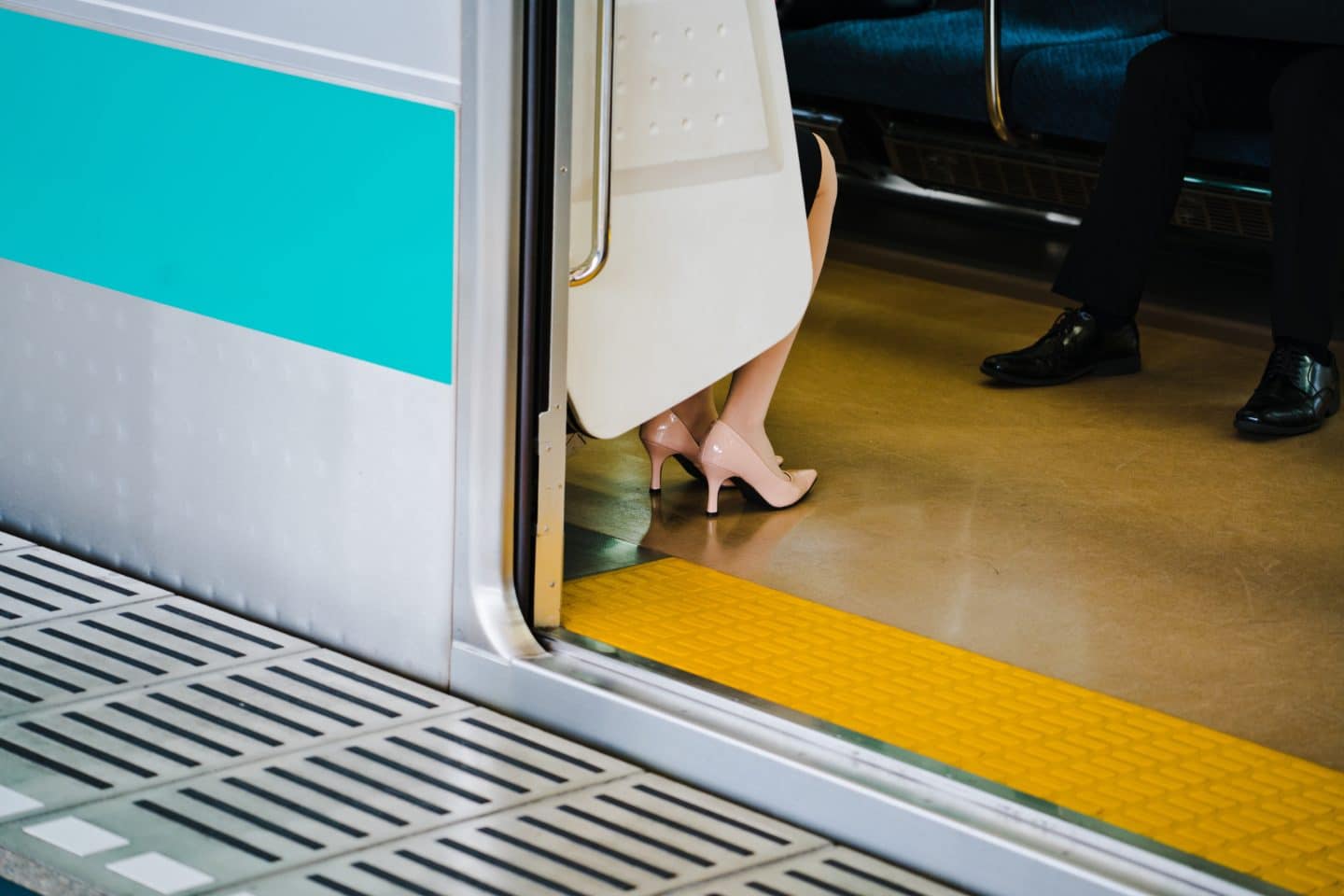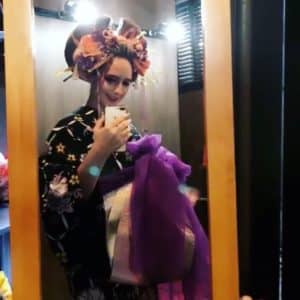
Okay. So this post is mostly for female readers.
Ive been getting lots of questions about what to wear ( or pack to wear) in Japan.
I’ve lived in Japan as an exchange student in high school and then on a working holiday visa, then in a corporate capacity and then again as a freelancer and Mum of two.
(See my About Me section if you’d like to know more about my story. )
PLEASE PLEASE NOTE:
THIS IS NOT A CLOTHING RULE BOOK, BY ANY MEANS.
THIS IS JUST MY ADVICE BASED ON MY TIME IN JAPAN, OPINIONS OF MY JAPANESE FRIENDS AND COLLEAGUES, PREVIOUS EMPLOYER GUIDELINES AND ALSO BASED ON “MISTAKES” IVE MADE IN THE PAST.
I’M SHARING THE KIND OF ADVICE I’D JUST SHARE WITH MY BEST FEMALE FRIENDS.
IT’S JAPAN. YOU WONT GO TO JAIL FOR GETTING IT ‘WRONG.’ YOU CAN IGNORE IT ALL IF YOU WANT TO .. BUT THESE ARE WHAT I CONSIDER TO BE THE MORE CULTURALLY SENSITIVE , APPROPRIATE AND MOST PRACTICAL CLOTHING OPTIONS ( AND I’VE WORKED THESE ‘GUIDELINES’ OUT BY A THOROUGH TRIAL AND ERROR METHOD.)
Here is a detailed list of what to pack for Japan depending on the month you are travelling.
JAPANESE DRESS CODE, OVERALL
Please see here if you are looking for tips for formal event fashion for women in Japan.
You can dress as casually as you like in Japan . Just a warning though , Japanese women (even the casual ones) are 1000 % more formal than I am on a casual day.
The thing you’ll notice is you will rarely see a person who is not well-kept. The clothing is almost never old and personal presentation is much more.. intentional.. than anywhere else I have lived.
That being said, I don’t ever feel shamed when I step out in my tracksuit pants to go to the supermarket.
However, is a brilliant opportunity to try out some of your favourite items of clothing – even if you’re just in town for sightseeing. Go for it. This is the place to wear the shiny items and take fashion risks, if you’d like to, that is.
FOOTWEAR
I speak about footwear quite a bit in my ‘Preparing for Japan’ article here but I will talk about it again and add some more information.
All footwear is fine. Heels , flats, boots, sneakers, sandals. The only thing I don’t see a lot of is older sneakers -but that doesn’t mean don’t do it. You just don’t really see “well-worn” dirty sneakers outside of the running track or gym but .. it’s not the end of the world if that’s what you like.
Just remember that in Japan you’ll be taking shoes on and off often. You’ll need easy slip on and off option so I wouldn’t bother with shoes that have lots of buttons, zips or clips.
And it also means that you should leave the extra smelly shoes at home.
If , like me, you have big feet, make sure that you stock up on shoes before you arrive. Sizes don’t run very big here – even in Tokyo. ( I talk about other things that I need to stock up on outside of Japan here.)
Make sure you have a pair of socks or socklets in your bag if you have sandals on. Once again, it’not the be all and end all if you need to be barefoot for a bit but it’s a bit more polite to have little socks to slip on. It also shows a bit of forethought in personal presentation – something regarded highly in Japan.
I speak about this more in my What to Pack for Japan : Month by Month blog post but… I find it best to pack two pairs of shoes for walking (two to mix it up when you have sore feet from sightseeing, exploring etc) and one pair of ankle boots, low heels or a wedge. This is so you aren’t underdressed for dinners out or bars etc – it’s good to have the option to not just look like a tourist in sneakers every single time you go out.
TOPS
If you’re walking around temples and shrines, it is a good idea to be respectful and have a top layer with sleeves and no tummy or cleavage showing.
However, it is not a rule and you’ll sometimes see Japanese people not following these dress-code standards. But as an outsider, I feel like being respectful ( or, at least, showing that you’re trying) is more important.
In general, you will rarely see Japanese women with spaghetti strapped tops or even shoulders out. That doesn’t mean its a no-no in Summer though – if that is what makes you most comfortable.
SHOWING CLEAVAGE IN JAPAN?
As for showing cleavage? It rarely happens (even in fancy situations like weddings etc.)
I don’t really recommend getting the boobies out.
It sometimes makes people here uncomfortable (even if its a tiny line of cleavage at the top of a v-neck.) Once again, it’s your call. I’ve done it. I’ve regretted it as some people have looked awkward or just made comments about me looking extra ‘sexy’ or unwanted comments about my body-shape (never unkind it just … made me feel awkward.)
LAYERS FOR DIFFERENT SEASONS
In Japan, the temperature indoors is pretty much exactly the opposite to outdoors. For this reason you need LAYERS!!
In the middle of winter – you need a light but really warm shirt ( heat-tech or light thermal for winter) and a big down jacket that you can strip off easily in a train or restaurant.
*:FYI: For context, winter weather here in January is similar to NYC but with less snow.
In the stickiest parts of summer – I recommend a really light breathable layer ( not many Japanese people show arms or cleavage – but its up to you – maybe not ideal for temples or posh restaurants to get too much skin out – for some reason, mini-skirts seem to be more than okay though…) and a cardigan or something light to throw on in an overly conditioned shopping mall or train.
THE BOTTOM HALF
There isn’t really much to say about the bottom half. Trousers are fine, jeans are fine, skirts are fine.
Many Japanese young women are covered up A LOT on the top half but have very short shirts and that seems to be fine, for some reason.
If you do this, just keep in mind that you will be bending down to take shoes on and off, more often than normal. Some restaurants may also require you to kneel.
RAINY SEASON/ SUMMER PREPARATION
You’re probably aware that other parts of Asia like Thailand or Malaysia have muggy, rainy seasons right at the beginning of Summer but Japan is always another place with very humid Summers. For this reason, pack a few light raincoats or ponchos in the suitcase too. Thin layers underneath as it gets sweaty. And, as I recommend here, please please don’t forget mosquito repellant
PERFUME
Okay so this is an unspoken rule that I sometimes choose to ignore.
Many Japanese women do not wear perfume. In a country with a large population and everyone is quite squished together, at times – perfume can sometimes be seen as inconsiderate to others who may not love the scent of your choice.
I wear perfume on a date with my husband or out with friends.
I avoid wearing perfume to work in Japan – and especially at job interviews.
Please note: its not a good idea to wear perfume out to high end sushi. Sushi is to be enjoyed by all 5 of the senses – so not only would you be inhibiting your own experience but the experience for other diners around you.
CAN I WEAR ACTIVE WEAR IN JAPAN?
I mean, you CAN but in Japan do people wear active wear or leisure wear out in public? No.
In fact, even in the gym, “active wear” is usually leggings or a stretchy fabric shirt with t-shirts and shorts on top (it’s not common to show the shape of your body at the gym in Japan – for modesty sake and it’s sportswear fashion is just different in Japan to reflect this.)
So ….will you go to jail for wearing your Lulu Lemon in Japan? Absolutely not.
But do my Japanese friends often ask me why foreigners are wearing their leggings out in public and are quite shocked when they do? The answer is most definitely yes.



